Turkey, Japan and Germany Will Unite And Produce Nuclear Weapons To Create A World Superpower Coalition And War Against The United States
By Walid Shoebat & Theodore Shoebat
“The way of peace they have not known,
And there is no justice in their ways;
They have made themselves crooked paths;
Whoever takes that way shall not know peace.” (Isaiah 59:8)
“America first” declares: ‘Let the world police itself,’ accelerating the restoration of militarist Japan, giving it the green light to become militarily independent. It is also enabling Muslim Turkey and Germany to become military giants (more on that later). With this exclusive report Shoebat.com provides here, this trinity of evil will be a formidable match to the US.
The days of Japan being known strictly as a pacifist nation are beginning to wane. Shinzo Abe’s government has reinterpreted the constitution to allow for “collective self defense,” which is just an elusive and incremental way to bring Japan closer and closer to the warpath, its militarism of olden days.
The former defense minister of Japan, Shigeru Ishiba, said in September of last year that Japan should pursue producing nuclear weapons, stating: “Is it really right for us to say that we will seek the protection of US nuclear weapons but we don’t want them inside our country?” Ishiba questioned whether or not the US would really come to the defense of Japan in the event of a war between Japan and North Korea. “It’s important to know when the United States would ‘open’ the nuclear umbrella for us,” Ishiba said. “If Japan, the only country to have suffered a nuclear attack, possessed nuclear weapons, it would send a message that it’s fine for anyone in the world to have them”.
While there is constant yammer coming from the masses that Japan will not return to the warpath because it is somehow militarily inept, or overly dependent on the US, the reality is that Japan would not have difficulty in becoming a very dangerous force (the naive do not understand that Japan already has an efficient military force). In fact, the US government knows that Japan and Germany have the ability to make nuclear weapons, not in a matter of years, but months. The US also knows very well that these countries will begin to show interest in producing nuclear weapons if they start to ‘lose trust’ in the United States. This issue was made known in a report addressed to the Committee on Foreign Relations of the United States Senate in 2008, entitled: Chain Reaction: Avoiding a Nuclear Arms Race in the Middle East, in which it says:
“In the cases of Germany and Japan, both countries can easily obtain nuclear weapons but have chosen not to because of their integration beneath a NATO (Germany) or an American (Japan) security umbrella. Today, all of these countries have the technical capacity to obtain nuclear weapons in a matter of months or a few short years. Yet, they chose not to because of their respective cost-benefit analyses. Pursuing nuclear weapons demands a large amount of finite money and other resources and could invite punishing international political pressure and economic sanctions. At the same time, little need exists to pursue such an undesirable policy because these countries do not view nuclear weapons as necessary for their national security. This belief derives primarily from the fact that these countries rest comfortably beneath a U.S. or U.S.-led security umbrella. If these countries ever begin to question the reliability of this security umbrella, they would almost certainly reassess past nuclear weapons decisions.”
This statement from the 2008 document proves that the United States knows that if Germany and Japan begin to show distrust for the United States to provide security, they will begin having interests in acquiring nuclear weapons. Trump, before he was even elected, was showing that he would not mind Japan having a nuclear arsenal, when he said:
“Would I rather have North Korea have [nuclear weapons] with Japan sitting there having them also? You may very well be better off if that’s the case. … If they’re attacked… we have to come totally to their defense. And that is a — that’s a real problem.”
Trump showed that he does not want the US to come to Japan’s defense. What did this do? It gave Japan more of a sign that they can further pursue military independence.
While Japan does not currently have nuclear weapons, it most certainly has the capacity to develop nuclear weapons, and the sophistication to deliver nuclear attacks. Unlike North Korea, Japan is a far more formidable force in East Asia. Japan has enough plutonium to create more than 5000 nuclear bombs. Japan’s capacity for nuclear technology is described by Mark Fitzpatrick:
“While the intentions behind Japan’s nuclear-hedging strategy are often kept hidden, the capabilities are clearly visible. Japan has the largest number of civilian nuclear facilities of any non-weapons state and the only one with complete fuel-cycle technologies, including both enrichment and reprocessing.”
Back in the 1980s the CIA was talking about inquiring to see how fast Japan would be able to obtain nuclear weapons. Shoebat.com poured into numerous CIA archives on Japan and its nuclear capacity. In a 1988 document found in the CIA archives, entitled: Query from Senator Murkowski (R., Alaska) about Japan’s capability to develop a nuclear weapon, it reads:
“During a recent briefing, Senator Murkowski diverted the discussion to Japan’s peaceful nuclear energy program and its acquisition of plutonium. He eventually asked if the Agency could provide a brief overview on the possibility of a nuclear program being undertaken in Japan. What additional capability would Japan need in order to use plutonium from its energy industry to fabricate a nuclear weapon?”
Where is North Korea ranked in comparison to Japan? Although Japan is currently ranked the seventh most powerful military in the world, with it being the third largest economy in the world, it has the potential to become much higher in the list of the most powerful militaries. In 1982, the CIA’s Foreign Broadcast Information Service produced a document entitled Japan Report, in which it presented the transcript of a panel discussion between leading Japanese officials on whether or not Japan must increase its military capacity, independently of the United States, since it could not rely on the Americans in case of a war.
The documents we discovered reveal that Japan has been showing interest in military independence for decades. In one part of the 1982 document, Masatsugu Ishibashi, the secretary general of the leftist Socialist party, said:
“The question has been raised as to whether the United States is certain to come to the rescue in the event Japan is attacked and invaded. I have no confidence at all on this point. I cannot entertain such easy-going expectations that the United States will hurry to Japan’s aid if it expects its own homeland to be devastated.”
Ishibashi goes on to say that if Japan did not honor its pacifist constitution, specifically Article 9 of the constitution (which prohibits any active role in war), then Japan, having the third largest Gross National Product (GNP) in the world, would become the third largest military on earth:
“If there were no Peace Constitution and if we did not have the power to insist that Article 9 be obeyed, Japan’s military strength would not be limited to seventh (some say eighth) place in the world. Since the GNP is third highest in the world, it can be said that the military power would be certain to be comparable, i.e., third largest in the world.”
This means that Japan has been preparing to turn its plowshares into swords. Ishibashi further on in his presentation says: “preparations are being made to alter the constitution, if possible, to officially recognize the right to collective defense.” This was said in 1982, and now in the second decade of the 21st century, this sentiment is stemming right from the top. Shinzo Abe and his government have been talking seriously about amending Article 9 of the Japanese constitution.
In the panel debate, Ishibashi exhorts for Japan to increase its military spending from one percent of its GNP, to three percent:
Japan, being ranked third in its GNP, Turkey ranked second in NATO militarily, and Germany being the most powerful military and economy in Europe, are all striving to make their militaries even more powerful. Knowing past history, the three combined spells catastrophe.
Goro Takeda, a Japanese general who was in the panel, expressed a desire for Japan to be militarily independent, when he said: “it is the will of the people to defend Japan by themselves. Since those we are going to fight are our enemy, there is no one else except the Japanese, in actuality, to stand in the way of the invaders.” Takeda was talking about a war against the Soviet Union. While both Takeda and Ishibashi agreed that peace should be pursued, their words reflected an itching for military independence. The reality remains that talks of military independence has been in Japan for decades, and in the present zeitgeist of militarism and nationalism, this desire is getting closer to fruition.
JAPAN AND URENCO
According to the Nikkei Asian Review, the Japanese government is currently going through negotiations to purchase Urenco, one of the largest producers of enriched plutonium in the world. The deal is expected to be worth several billions of dollars.
While the Japanese are stating that their reason behind this deal is to become more dependent on nuclear power as a source for electricity, this is just one of the motivations. Japan is interested in purchasing Urenco to prevent Russia or China from buying this company, in what looks to be a nuclear proliferation competition between these countries. According to one report: “The joint bid for Urenco is aimed at keeping Russia and China at bay. Both countries are said to be showing interest in acquiring the enriched uranium producer.”
China currently has thirty five nuclear reactors as of January 2017, while Russia has thirty. Japan almost combines both. It has fifty-three nuclear reactors. However, if you include the nuclear reactors that are being planned in Russia and China, Russia has fifty-five, and China eighty-two, surpassing Japan’s fifty-three nuclear reactors. Japan wants to counteract China’s and Russia’s nuclear production by purchasing a huge share of Urenco.
The Japanese plan to purchase a huge chunk of Urenco is part of American industrial interests. In March of 2017, Westinghouse, an American nuclear company under Toshiba, went bankrupt. The Trump administration, supposedly, was terrified that China would buy Westinghouse, and the US government was even determined to stop any Chinese purchase of the company (Toshiba eventually sold Westinghouse for $4.6 billion to the Canadian investment firm Brookfield Business Partners). Now with Japan expected to purchase a significant part of Urenco, the United States is pleased to see their Japanese ally gaining an advantage position in nuclear production against China and Russia.
And there is major American industrial backing to Japan’s nuclear aspirations. Daniel Poneman, president and CEO of Centrus Energy who served as U.S. deputy energy secretary under Obama, according to one report, “can act as a go-between to the current White House and help Japan maintain a solid relationship with the U.S.”
The government of Japan is currently holding talks with shareholders of the company. The owners of the company are the governments of the Netherlands and of Great Britain, and the German companies E.ON and RWE.
While Urenco has denied that these negotiations are taking place, one must ask why the world’s largest financial newspaper, Nikkei, would lie about such a thing? Why would such a reputable paper make up this entire story, with all of this detail? It looks like Urenco is denying that the negotiations are happening to cover up their plans.
The Japan Bank of International Cooperation, which is owned by the Japanese government, is expected to make an offer alongside the U.S. nuclear energy company, Centrus Energy (the same company that Poeman is a CEO of, showing private American industrial interest in this purchase).
The objective behind this is political, and has everything to do with Japan being the dominating superpower in Asia. The CEO of Japan Bank of International Cooperation is Tadashi Maeda, who is also a member of the major think-tank, International Institute for Strategic Studies (IISS).
In 2014, Maeda attended a panel discussion in Oslo, Norway, called the 11th IISS Global Strategic Review. In the conference Maeda made it clear — using what tickles American ears — that Japan’s nuclear interest were against Russia. A document published by IISS on the event recounted that, “Maeda noted that the gradual restarting of Japan’s nuclear power plants following the Fukushima nuclear accident would act against Russian supply prospects, as would the Japanese domestic energy-distribution monopoly, which has impeded pipeline construction in the past.”
ARMS PRODUCTION
Japan has just recently completed its XASM-3 supersonic anti-ship missile, and is planning on mass producing them by 2019. According to the Yomiuri Shimbun newspaper: “The introduction of the new missile is aimed at keeping the Chinese Navy — which has been taking high-handed action in the East China Sea and other places — in check”. The missile will be carried by the Japan Air Self-Defense Force’s (JASDF) F-2 multirole fighter jets, a Mitsubishi license-produced variant of Lockheed Martin’s F-16.
Japan is also planning on arming their F-35A stealth fighter jets with the Joint Strike Missile (JSM) by 2025. This new missile will be able to hit a target 500 kilometers (310 miles) away, with extreme precision.
The production of weapons like the XASM-3 is being conducted under the umbrella of the Acquisition, Technology & Logistics Agency (ATLA), which was just formed in July of 2015 in order to “bring together disparate parts of the Ministry of Defense working on defense R&D [research and development], procurement, and exports under one roof.”
Japan’s pursuit towards becoming a military industrial center has been going on for a very long time. In 1967, Prime Minister Eisako Sato set up “Three Principles on Arms Export and Their Related Policy Guidelines,” prohibiting any sort of exporting of arms to communist countries, countries involved in violent conflicts, or countries placed under arms embargoes by the United Nation. These rules became even more stringent in 1976, when Prime Minister Takeo Miki established a complete ban on exporting any arms regardless of where they were sent. These rules lasted for four decades, until the 1980s when Japan allowed for the one single exception that arms could be exported to the United States, of course, especially for cooperation on Ballistic Missile Defense.
This rule began to see a turning point in 2013, when Japan released its first ever National Security Strategy, which set out a promise to review the prohibition on exports. In April of 2014, Abe’s Cabinet did a revision on the rules, allowing for arms exports for the purpose of advancing Japan’s own security interests. All of these actions are incremental steps to an ultimate goal, and that is a militarily independent Japan. The creation of ATLA is part of this goal, working on creating efficiency in the production of military technology. What is very interesting about ATLA is that, in the words of Crystal Pryor, “Parliamentary oversight is basically nonexistent, even though as an advanced democracy, Japanese people should demand that their elected officials be involved.”
In the Meiji era of Japan in the 19th century, the slogan was “rich nation/strong army” (Fokuku kyohei), and the foundation of this strategy was “increase industrial productivity” (shokusan kogyo). This policy was inspired by the German victories over France in the Franco-Prussian War. This mentality still has never left Japan, with the country still working to be militarily advanced.
TECHNONATIONALISM
Japan has a strategy of fusing technocratic aims and nationalist aims, which is defined as “technonationalism.” In the words of Richard Samuels:
“Japanese military and industrial strategies have been built on a fusion of industrial, technology, and national security policies. This fusion, dubbed technonationalism [italics mine], has persisted in both the prewar era, when Japan used military means to achieve its national objectives, and in the postwar period, when its policies were more completely commercial.” (See Michael J. Green, Arming Japan)
Of course it is obvious that Japan is not the only country that utilizes technonationalism. The United States and many other countries use this, and soon this will all erupt in a clash of nations, in war.
The technologies for warfare that the most powerful of nations are developing are beyond conventional imaginations when it comes to military conflicts. The weaponry that they are producing is nothing like what was seen in the Second World War, and has gone beyond general military technology. We are speaking of robots and artificial intelligence (AI) for the use of killing people in the battlefield. Now this is no longer beyond general military manufacturing and has become common in defense production. Arthur Herman speaks of “technologies and systems that until recently lay outside the conventional defense sector,” and analyst Toshifumi Kokubun, commentating on these words, writes:
“Core components of this strategy include unmanned systems, robotics, miniaturization, artificial intelligence (AI) and big data, among others. That list overlaps with many key sectors identified in various national-technology plans, which invariably include robotics, AI, and big data, along with nanotechnology, biotechnology, quantum computing and composite materials. The U.S. Defense Innovation Initiative, launched in 2014, aims to tap the energy and potential of actors ‘outside the Department of Defense’s traditional orbit.’ Foreign countries are among them. Japan, which has cutting-edge technologies in many of these fields, is a primary partner in this effort.”
The United States Innovation Initiative is seeking after this technology outside of the watch of the Department of Defense. In other words, corporations can override the auspices of government. Japan is so advanced (unlike the “threat” of North Korea), that the United States is essentially going to learn from Japan’s military technological research.
After the Second World War, Japan, understandably, was made militarily dependent on the US. In the 1970s, Japan pushed to become a more militarily independent country through the collaboration between industries and government. This desire to further this policy is found in a 2014 report from Japan’s Ministry of Defense, in which it talks about how Japan’s Self-Defense Forces were made subordinate to the US after its defeat in the Second World War, but that it was determined to break out of this and develop military technology independently through its own government-industry cooperation. As the report says:
“Most of Japan’s defense production and technological base was lost at the end of WWII. The newly established JSDF (Japan Self-Defense Forces, established in 1954) was dependent on US deliveries and leases of defense equipment by the U.S., but Japan strived to strengthen its defense production and technological bases by license production and indigenous production, and research and development of major defense equipment, through government-industry cooperation based on the basic guideline for production and development of defense equipment (so-called kokusanka-hoshin (guideline for indigenous development/production) of 1970.”
Notice that the report affirms that Japan was determined to establish its own production of military technology independent of the United States. This is a reflection of what Japan currently wants to do: to break away from US control and bring back its own militarist country, with the aspirations of reviving its old empire. Lets not forget that Shinzo Abe himself said that he likens his military policies to the Meiji era of Japan, in which the country was unified, placed under emperor worship and would arise as the dominant nation in East Asia that would eventually crush the Russians in the Russo-Japanese War (1904-1905), establishing itself as a force that impressed both the Western powers and the Ottoman Empire.
Going back to the 2014 document from Japan’s Ministry of Defense, it expresses Japans desire for “independence of security as well as having characteristics of industrial policy in the sense that production of defense equipment has a positive ripple effect on economic activity by private companies”. Notice the words, “independence of security,” denoting an agenda of being militarily free from the American security umbrella. Remember what the 2008 document addressed to the Committee on Foreign Relations warns: that if Japan and Germany begin to express distrust for the American security umbrella, they will acquire nuclear weapons. Well, its quite obvious that Japan wants, and has been wanting, to become militarily independent from the United States, and is, and has been, expressing distrust for the United States, which means that it will certainly pursue the production of nuclear weapons.
JAPAN, TURKEY AND FRANCE
What makes Japan even more interesting in this aspect of militarism is Shinzo Abe’s unusual amount of collaboration with Turkey. From 2006 to 2007, Abe served as Japan’s Prime Minister. Five years after this, in 2012, Shinzo Abe got voted in again to serve as Prime Minister. For those five years in between his two terms, Tokyo pretty much ignored Ankara. Shinzo Abe has been showing a distinguished interest in devising plans with Turkey. J. Berkshire Miller, writing in a 2014 report for the Diplomat, writes:
“Abe has put an unusual amount of effort into bolstering the relationship with Ankara through two separate trips to the country since taking office. Abe also welcomed Turkish Prime Minister Recep Tayyip Erdogan to Japan this past January. The rapid expansion in Japan-Turkey ties is even more dramatic, given that Ankara was all but ignored by Tokyo in the five years between the Abe 1.0 and Abe 2.0 administrations. Indeed, the last Japanese Prime Minister to visit Turkey (before Abe) was former LDP leader Junichiro Koizumi.”
Turkey built an undersea tunnel that crosses the Bosphorus Strait, called the Eurasia Tunnel, which became operational in December of 2016. The project costed $4 billion dollars. One billion of that was given by the Japan Bank of International Cooperation, the very banking company that is, according to Nikkei Asian Review, putting a bid to have Japan purchase one of the world’s largest producers of enriched plutonium, Urenco. Abe visited Istanbul for the opening ceremony of the tunnel back in 2014, and declared in his speech:
“This project has been accomplished thanks to the cooperation of Japan’s high-technology and Turkey’s experienced labor power. The upcoming year is the 90th anniversary of diplomatic relations between Turkey and Japan. I hope this project will be the new symbol of the two countries’ friendship.”
An even bigger deal than the undersea tunnel is Japan’s agreement to build the Sinop nuclear power plant in Sinop, in northern Turkey. It is being projected that the first unit of the Sinop plant will be done by 2023, and the fourth unit will be in service by 2028. The project goes back to 2013, when Erdogan and Abe signed an outline US$22 billion deal for the construction of the Sinop Nuclear Power Plant in Turkey. The Sinop power plant will be built by Atmea, a joint venture between Orano, a major multinational company that specializes in nuclear technology, and that is owned by the French government, and Mitsubishi Heavy Industries (MHI).
Turkish defense circles are very excited about this, as is reflected in the top English language magazine from the Turkish military industrial complex, Defense Turkey, which in its own words, is “a bilateral information platform to the Turkish military and defence officials, Turkish decision makers, procurement executives and Turkish defence industry members on the developments of international defence industries, capabilities and technologies.”
In one report published by Defense Turkey, entitled, Defence: Bilateral Franco-Turkish Relationship, it reads:
“For over 5 centuries, France and the Ottoman Empire – now Turkey – have maintained close diplomatic relations, with the exception of some difficult spells. … The time is right to resume political discussions and strengthen economic relations between the two countries, particularly in the fields of armaments, energy and aeronautics. In 2013 the French Government owned Areva Company and its Japanese partner MHI, won a € 17 billion contract to supply four Atmea nuclear power plants.”
It is very interesting that this magazine connects the building of this nuclear power plant in Turkey by France and Japan, with the long history of military collaboration between France and the Ottoman Empire.
This is a dark reality that is hardly discussed. One very significant moment of this Franco-Turkish alliance was in the 16th century, when the French Valois kingdom made an alliance with the Ottoman Empire against the Habsburgs. In 1536, King Francis I made a coalition with Hayreddin Barbarossa, an Ottoman navy admiral, becoming the first European king to establish an alliance with the Ottoman Empire. The French and the Ottomans joined together to fight against the Italian navy of Genoa that was led by Andrea Doria. The Catholic Church got involved, trying to bring peace between the European countries, with Pope Paul III promoting reconciliation as a direct response against the French and Ottoman alliance.
This effort was to no avail. Together the French and the Ottomans attacked the Greek island of Corfu in 1537. In July of 1543, Barbarossa led a fleet of 110 ships, with the French ambassador on board, to partake in a French-Ottoman invasion of Nice (which was then under the control of the Duchy of Savoy). The invasion was, in the words of historian Mark Greengrass, “Christians fighting alongside Ottomans against Christians.”
French and Ottoman troops joining together to fight the Italian Catholics, is a fulfillment of Daniel’s warning:
For the ships of Chittim [Romans/Italians] shall come against him [Antichrist]: therefore he shall be grieved, and return [retreat], and have indignation against the holy covenant: so shall he do; he shall even return, and have intelligence [conspiracy] with them that forsake the holy covenant. (Daniel 11:30)
In September of 1543, the Ottomans requested from the French a port in France in which to make a base. The French fulfilled this request and gave the Turks the city of Toulon. All French inhabitants of the city, with the exception of heads of households, were made to leave. For eight months, Toulon was an Ottoman military base. (See Greengrass, Christendom Destroyed, ch. 9, pp. 303-304)
Given this historical reality, what are the French up to collaborating with the Japanese to make a nuclear power plant in Turkey?
We cannot know everything as far as their motivation goes. But what we do know for certain is that it is being done for profit, just as the French in the past allied with the Ottomans for profit and power.
At the end of the day, the international military industrial complex is about making profit, even if it has to kill countless lives.
The whole earth is going nuclear. The chairman and CEO of the company that is making the Sonip nuclear power plant in Turkey, Atmea, is Stefan von Scheid, a member of the Presidential Council of the German Atomic Forum.
Another member of the Council is Winfried Petry, who was actually elected as vice-president of the Council in 2009. Petry was also the scientific director of the Forschungs-Neutronenquelle Heinz Maier-Leibnitz (Research Neutron Source Heinz Maier-Leibnitz). Upon being elected vice-president, Petry spoke of some very interesting things: he talked about how Germany is becoming a center for nuclear research:
“In my time as vice president I want to emphasize the high value of science and research in the nuclear field for a leading industrial nation as Germany. Despite the planned nuclear power phase-out in, Germany has to continuously take a leasing role in the nuclear research. Thus we have enough power to influence international standards and attract researchers from all over the world to Germany, which offers the necessary know-how”
Remember what the 2008 document said: if Japan or Germany express distrust for the United States security umbrella, they will begin to question old policies on nuclear weaponry, implying that they will pursue the possession of nuclear weapons. Talk of distrust towards the United States has already been happening in Germany. Remember what Merkel said in May of 2017:
“The times in which [Germany] could fully rely on others are partly over. I have experienced this in the last few days… We Europeans really have to take our destiny into our own hands.”
Distrust is a minor issue, in comparison to the ability to have power to revive the wounded beasts of the past. Roderich Kiesewetter, a member of the German parliament for the Protestant Christian Democrats — the same party of Angela Merkel — wrote an article for the Right-wing publication, Frankfurter Allgemeine Zeitung, stating that now is the time to contemplate “the altogether unthinkable for a German brain, the question of a nuclear deterrence capability, which could make up for doubts about American guarantees”.
With major German officials expressing distrust for the United States, and interest in creating nuclear weapons, and in the wake of the most prestigious scientific establishment in Germany, the Max Planck Institute, creating the nuclear fusion reactor, the Wendelstein 7-X stellarator; and with Japan also showing more military independence, and the fact that Japan, in April of 2013, refused to sign a joint-statement on the non-proliferation of nuclear weapons, presages what the future holds: nuclear war.
In East Asia, you have two polls of power — Japan and China — vying for domination of that area of the continent. Historically, these two countries have been wanting to be the biggest dog in the pound, fighting for the same bone of power. The Chinese statesmen, Yuan Shikai, wrote in the year 1913:
“In the hands of such a [strong] government China will soon become a World-Power, easily able to hold her territory against aggression … With her wealth of internal resources and her teeming millions, a Westernized China must sooner or later count as the controlling factor in industrial and military struggles of the world.”
In an old Japanese school song, popular in the first half of the twentieth century, we read:
“From Karafuto and the Kuriles in the north to Taiwan and Pescadores in the south, Korea and all Japan … the nation our taikun [commander] rules, and the fifty million countrymen over whom waves the flag of the rising sun.” (See Emmerson, 1913)
With two great powers struggling for the same region, the two are bound to clash inevitably. Japan warred against China in the First Sino-Japanese War (1894-1895), and again in the Second World War. Who is to say that such powers will not war with each other again?
That which has been is what will be,
That which is done is what will be done,
And there is nothing new under the sun. (Ecclesiastes 1:9)
The ways of man is war, peace he knows not. As the prophet says:
“The way of peace they have not known,
And there is no justice in their ways;
They have made themselves crooked paths;
Whoever takes that way shall not know peace.” (Isaiah 59:8)



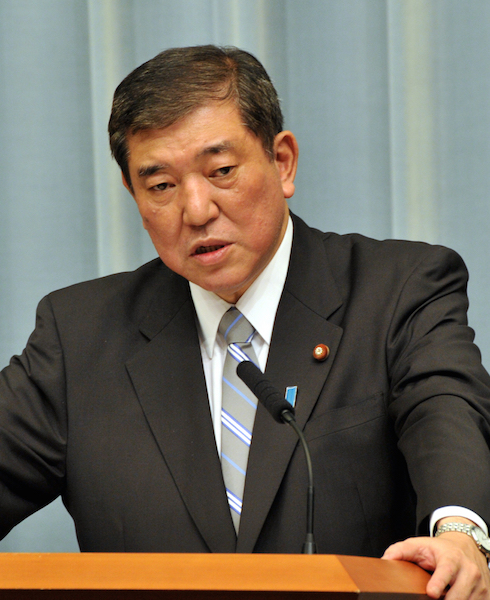

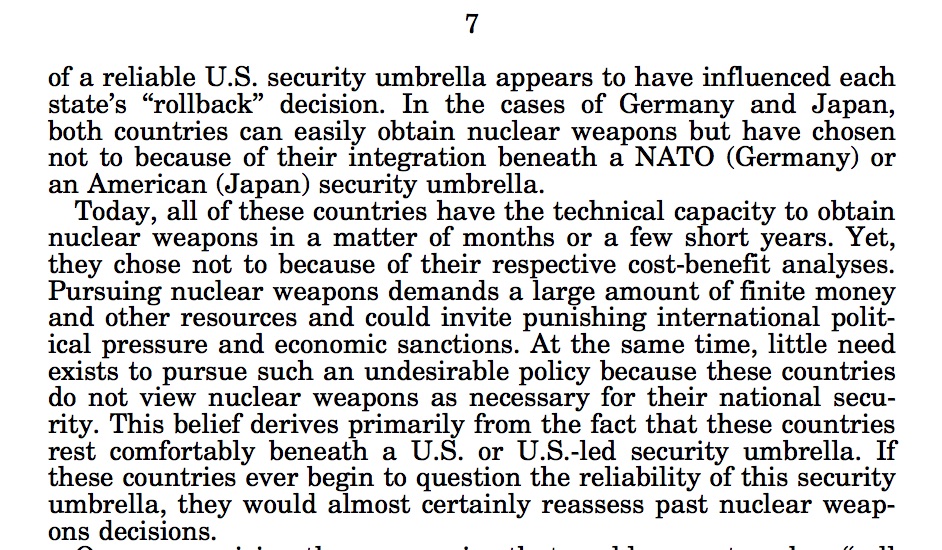







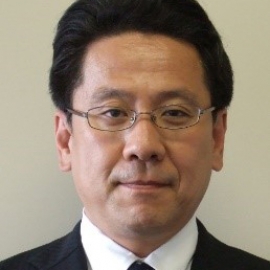
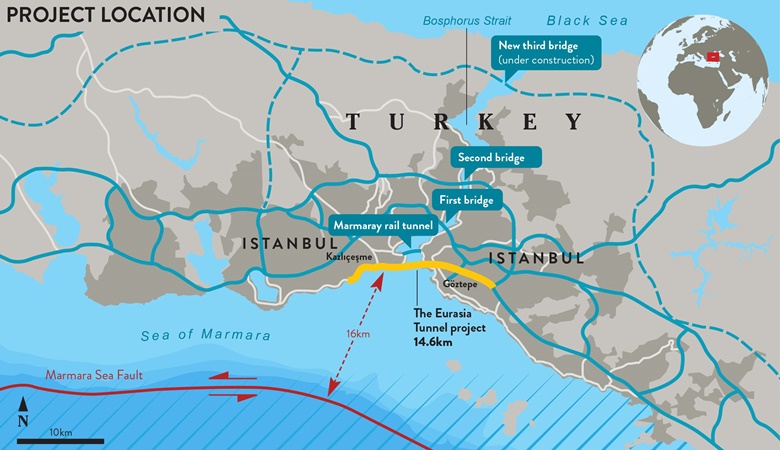
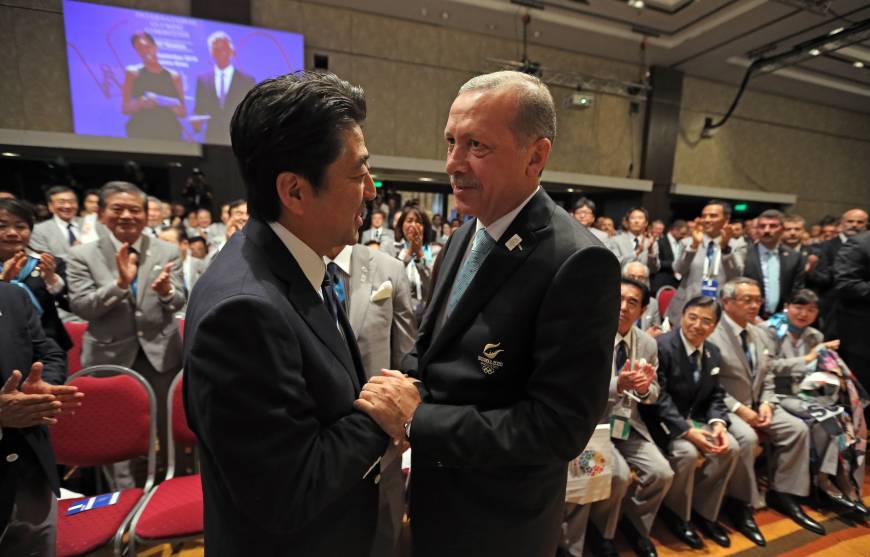
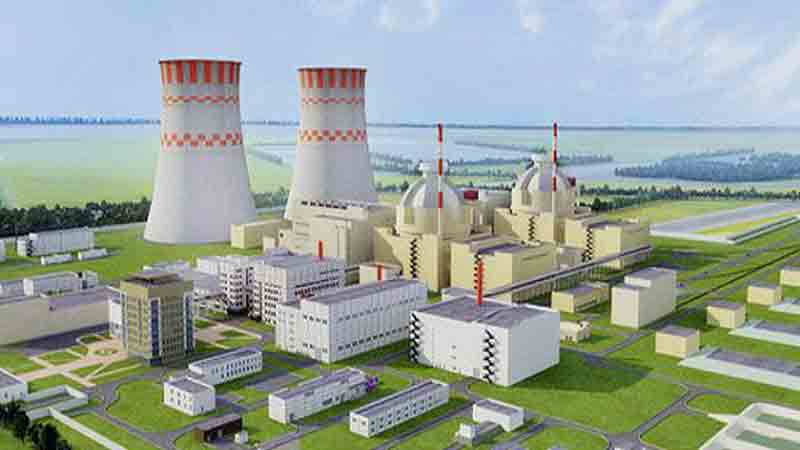




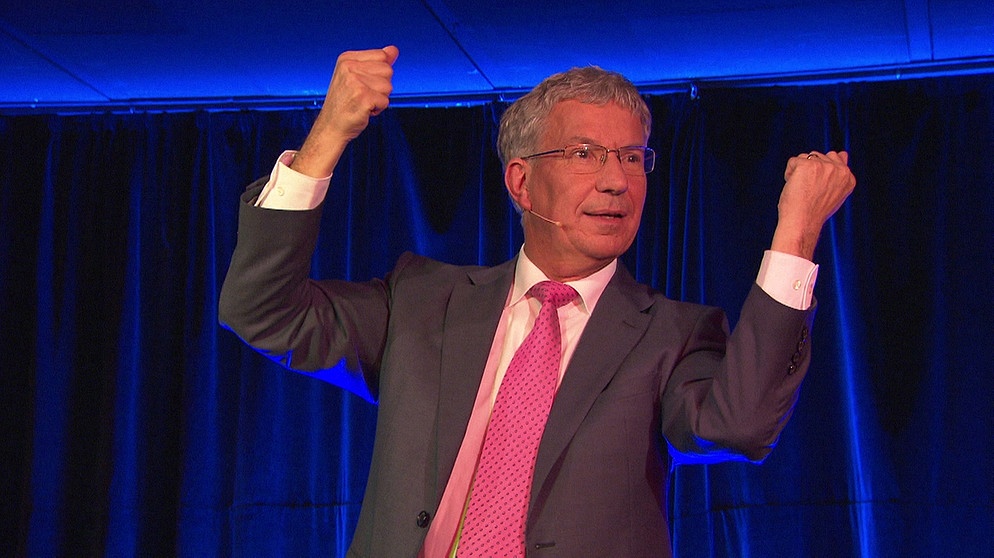



Comments are closed.